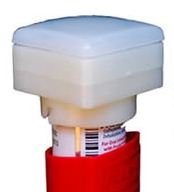UCSF: “Although it won’t be obvious to UCSF Medical Center patients, behind the scenes a family of giant robots now counts and processes their medications. With a new automated hospital pharmacy, believed to be the nation’s most comprehensive, UCSF is using robotic technology and electronics to prepare and track medications with the goal of improving patient safety.
Not a single error has occurred in the 350,000 doses of medication prepared during the system’s recent phase in.”
Robotics is nothing new, but it seems like everyone is taking notice of the new robotics in the pharmacy at UCSF. I suppose all the people pointing it out to me has something to do with the fact that UCSF School of Pharmacy is my alma mater, but you never know. Anyway, I’m pleasantly surprised to see UCSF taking such an active role in advancing pharmacy practice. When I spoke with some colleagues sill working for UCSF a little over a year ago they were still practicing pharmacy invented in the dark ages. Not any more.
Now I’m trying to get a hold of someone at UCSF that will let me stop by for a tour, and all of a sudden no one knows me. Poetic justice I suppose.

